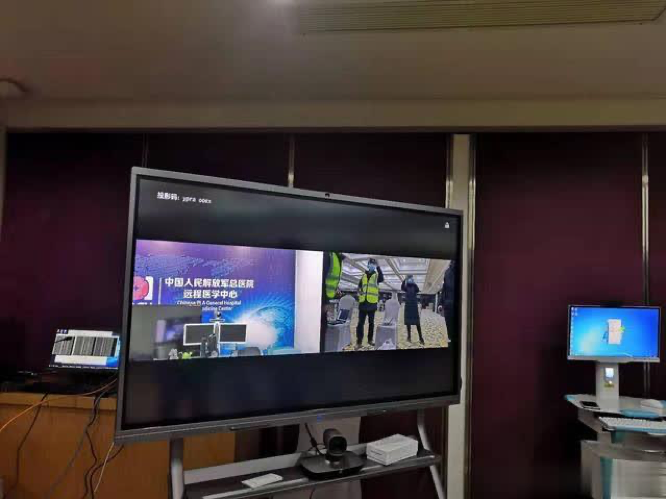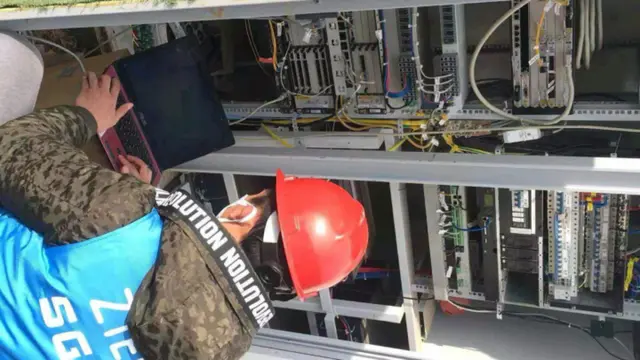5G is a new technology and its first big test has been the COVID-19 outbreak.
Chinese telecommunication giant ZTE, partnering with China Telecom, has invested over eight million U.S. dollars and sent over 30 engineers to equip Leishenshan Hospital with a 5G network. The hospital was built in just 10 days to accommodate COVID-19 patients with severe symptoms in Wuhan.
ZTE suffered a big blow in 2018 after receiving a hefty fine for violating U.S. sanctions against Iran and the DPRK. The company has now embraced 5G as a way to reboot its performance.

Remote Diagnosis at Leishenshan Hospital /CGTN
"Leishenshan Hospital needed to be built with good quarantine conditions to accommodate patients. The advantage of 5G is that as a portable wireless service, it can provide internet service for computers, mobile and medical equipment, without needing cable lines to support streaming services. This made construction work easier and faster. Furthermore, 5G technology could support remote video conferencing and invite experts from far away to join online diagnoses for severe patients," said Gan Yingdong, ZTE's 5G Project Representative in Wuhan in a Skype interview with CGTN.
The first 5G application in Leishenshan Hospital saw hundreds of thousands of netizens watch live broadcasts of the construction site through the social media platform of the Chinese state television.
When the hospital started to admit patients, medical staff tried automatic CT-scans on isolated patients via 5G technology to reduce cross infection.
These practices were not just in Leishenshan. ZTE has supported many hospitals in Hubei and other provinces with this technology so they can test it out.
In the future, they hope AI-assisted operations can be achieved with the support of 5G technology.
"The application of 5G technology in Leishenshan hospital is very promising. It will lay a further foundation for its application in telemedicine areas in the future," said Gan.
His comments echo Bloomberg's report for China's 5G prospects. Nikkie Lu, the author of the report and senior Industry Analyst at Bloomberg, told CGTN via Skype, that despite the temporary disruption of the supply chain, the fight against coronavirus provides a stress test for 5G technology.

5G use in a driverless car /CGTN
"I personally think that after this event, China is going to be able to gain so much from the experience and we can leverage what we learned during that outbreak and in the future implement the 5G technology into the hospitals' framework," Nikkie told.
"We are highlighting some areas where we can stress test the reliability of the 5G network. First of all, we have the ability to transmit large imaging files, such as CT scans for pneumonia patients. Secondly, we can provide remote diagnoses, and number three is the sensitivity of connectivity of the machine, data, the medical professionals as well as the patients," Nikkie added.
The 5G technology is not a simple alternative to 4G or 3G cellular networks. Its ecosystem will bring us into an era of internet of everything, where driverless cars, AI operations, medical robots, and smart homes will finally become part of our daily lives.
However, there has been an ideological debate around 5G outside China and China's 5G provider Huawei was banned from the U.S. market.
Despite U.S. pressure, the UK government gave Huawei the green light on 5G technology at the end of January.
(CGTN)
 简体中文
简体中文




